We’ve been having a lot of fun with this game lately – I’m still not qualified to do a “pinball showcase” because the ruleset is so complicated (and partially unfinished) that I’m not ready to do that, but I can comment on what I think of the game and which version is the one you might want depending upon your priorities?
Category Archives: Commentary
You’ve Got A Pinball Machine! Now What?
This video addresses a common scenario that I often hear about – mostly from people who aren’t very familiar with these games. Someone gets a pinball machine and it doesn’t work. Now what? Let’s walk through this situation with a game I just picked up and explain the process of what to do when you have a new pinball that you don’t really know what condition it’s in or what’s wrong? What do you do? Are there things you should not do? How do you tell what’s wrong? Let’s get into it.
Be sure to subscribe: https://youtube.com/pinballhelp?sub_confirmation=1
Should You Buy A Pinball Machine? A guide for beginners.
Lately I’ve been putting some of my games up for sale, and I get a lot of people who have never owned pinball machines contacting me. They have a romantic idea of setting up a game room for their kids and remember pinball machines fondly and want to have one at home. Sounds great right? I agree it can be very rewarding… but you have to know what you’re potentially getting yourself into. A pinball machine is not like a regular modern amusement device. Let’s go over the pros, cons and pitfalls of owning pinball machines, and while you think your kids will enjoy it, are you sure? Let’s dive in and talk about it!
A Pinball Arcade Livestream Studio
Another thing I do in addition to operating and repairing pinball machines is run a special, unique space in the New Orleans area called the “PinChurch” – it’s a long story about how this came to be that you can find out more here if you want. But in short, it’s a unique space that is supported by a small but tight knit community of enthusiasts and creative people.
We do all kinds of things in the club, including occasional outreach projects to help those in the local community. We’ve turned our arcade into a high quality recording and broadcast studio and during the Covid-19 pandemic, as well as during the phase outs, we’ve been hosting local artists who need to make a living because the places they normally play at are closed. We live stream the events and help people discover new music and help support local artists.
I made a short video of what that’s like, so share with you all. To find out more, visit www.PinChurch.com – you also can help support our efforts if you like!
Pinball Stories #2: Escape from the Lost World
This is the second installment in a new series I’m doing with the “stories behind the games”. Each owner has his own unique story about how they came to acquire the game. Sometimes the stories are as interesting as the game itself. The first episode was on my first game. This story covers a more recently acquired game and how I saved it from imminent destruction.
Pinball Stories #1: My first game, “Genie” by Gottlieb
One of the things us pinball enthusiasts love to do is tell stories about how we acquired games. Each game has its own unique provenance and history, and there’s almost always an interesting story behind them. This is the first episode in an ongoing series were we talk about the stories behind the games and how they came to be. I start the series off with the very first pinball machine I purchased, a Gottlieb “Genie” – before I knew anything about how to repair and restore games. It was the game that got me on this path. I hope you enjoy the story – be sure to subscribe on Youtube! Thanks for watching!
Here are some pictures from early on when I got the game and began to restore it.
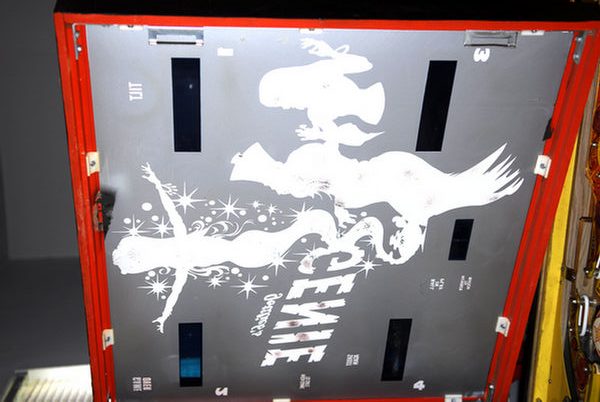
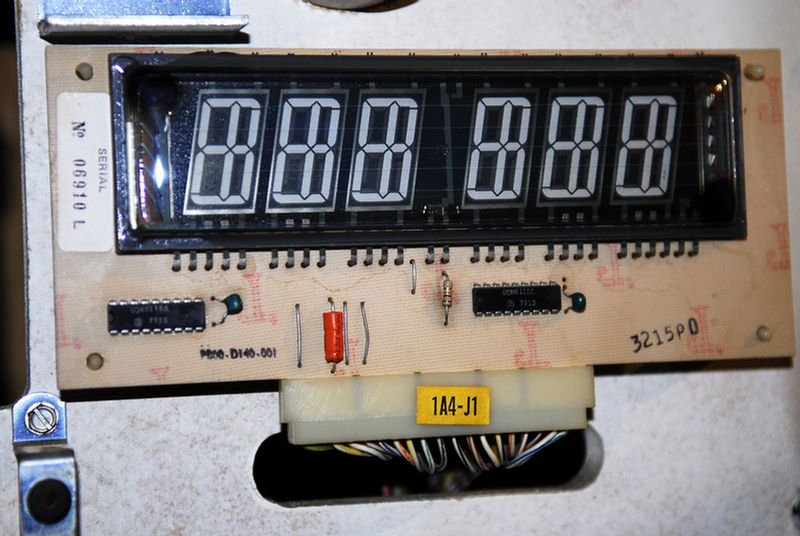
original gas plasma displays 
weird original wiring 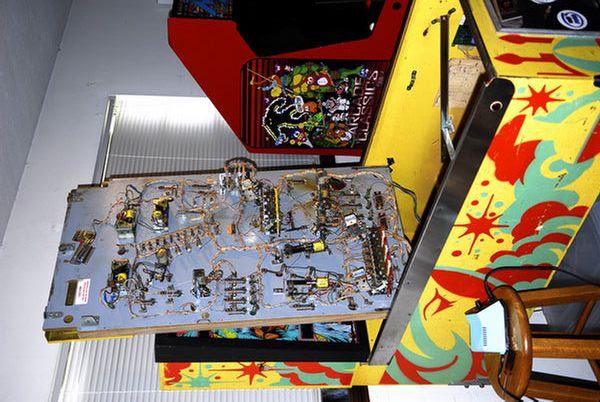
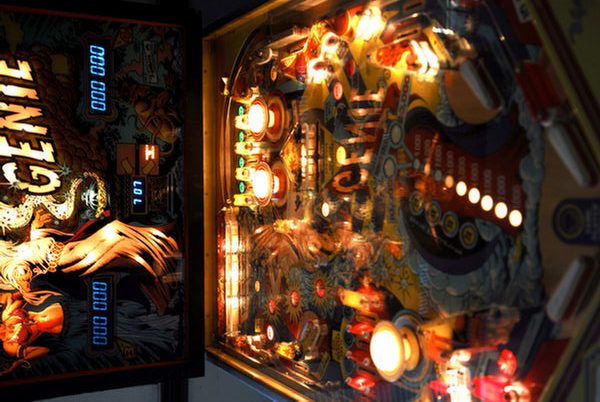
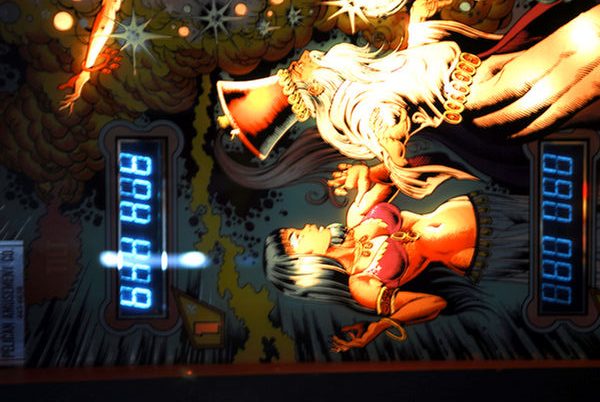
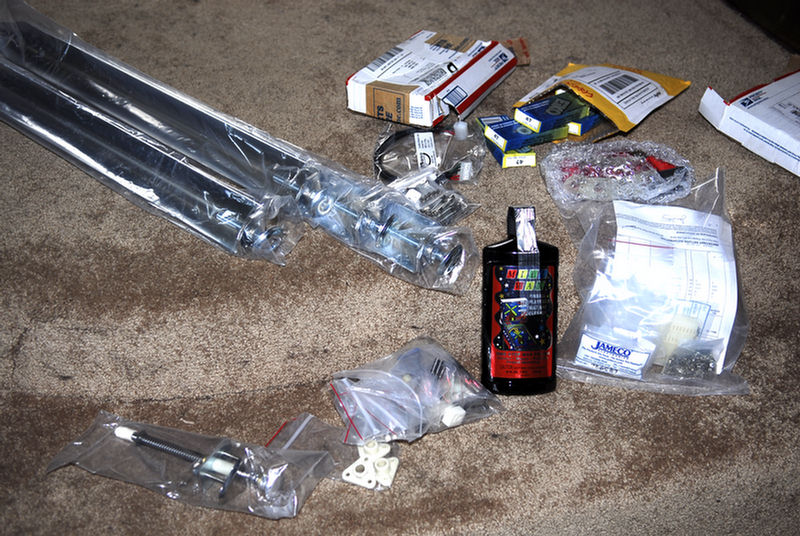
lots of new parts 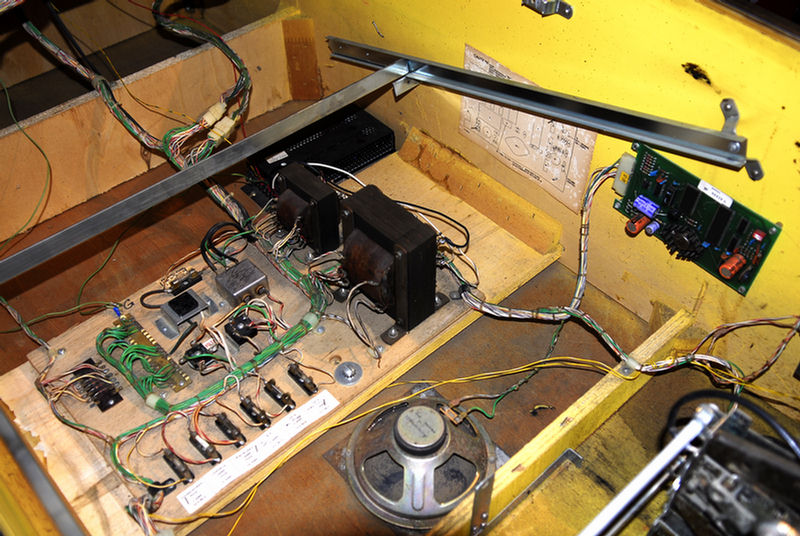
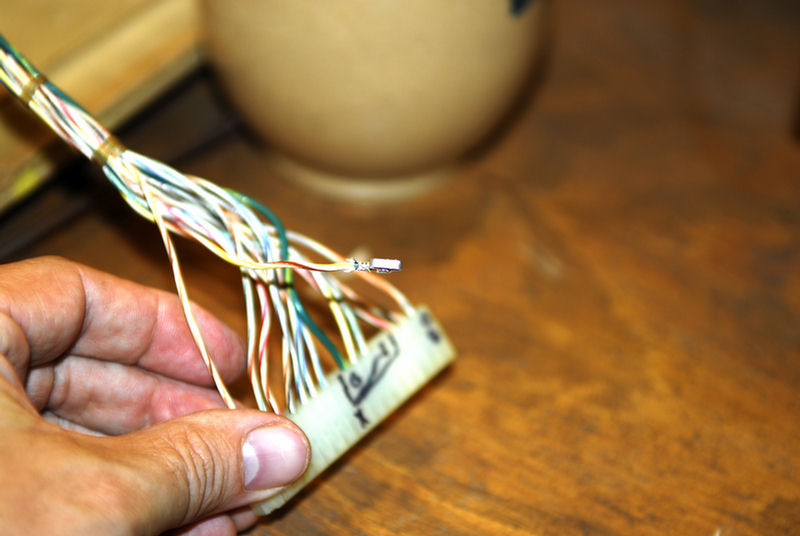
re-pinning the connectors 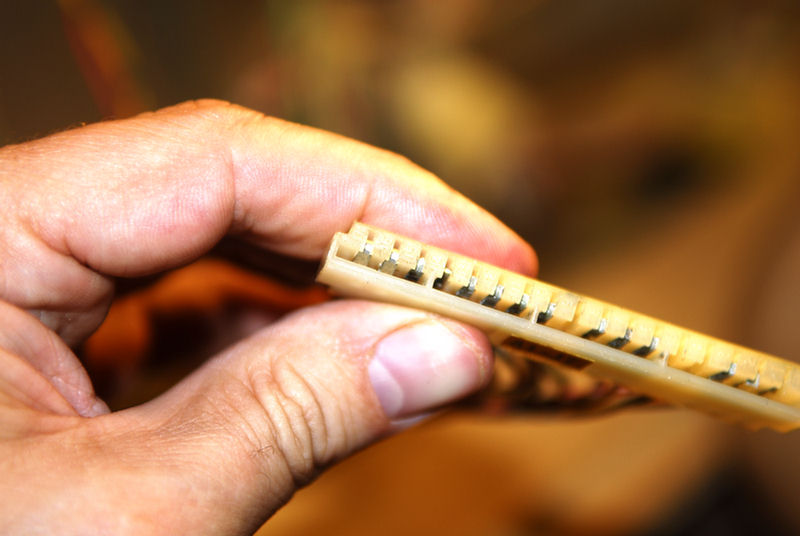
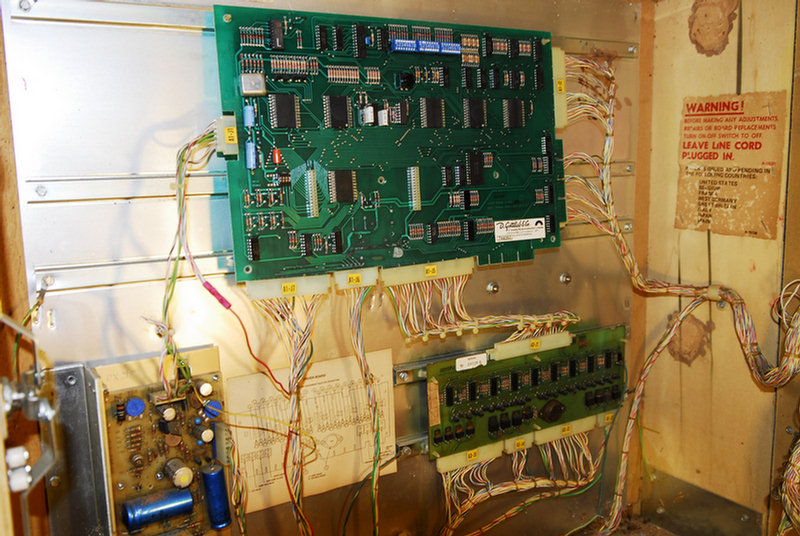
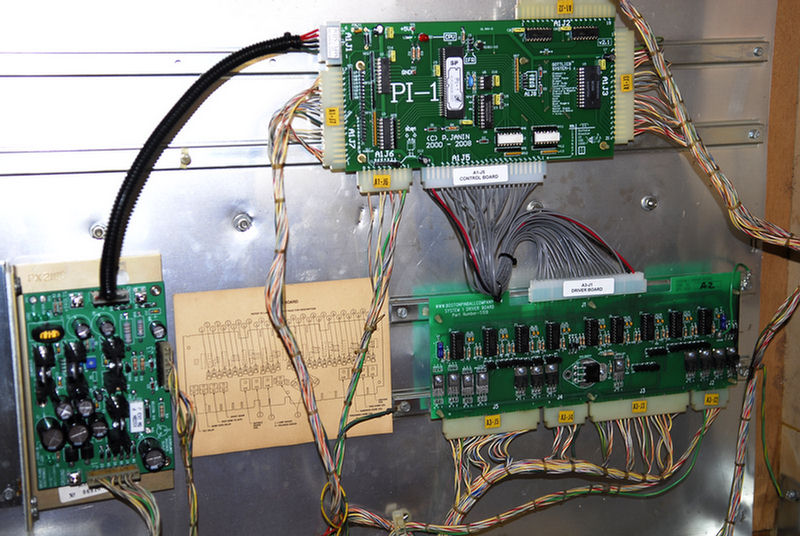
replacing most of the system boards 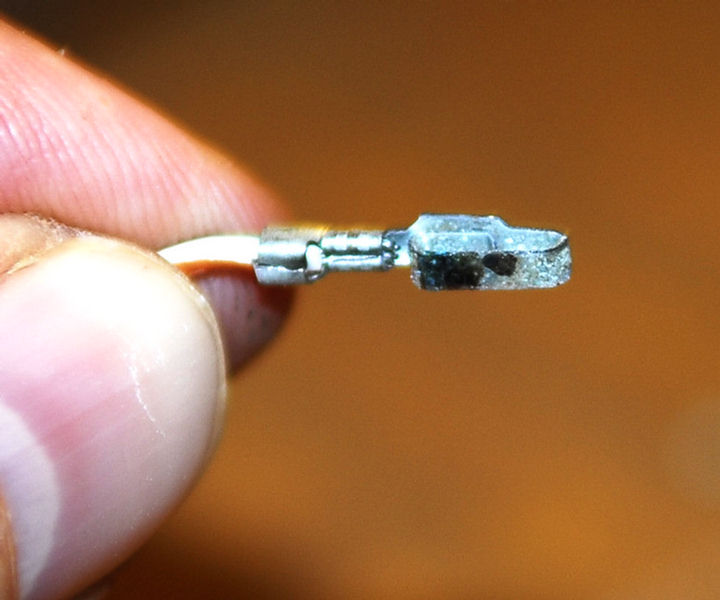
old damaged edge connector pins 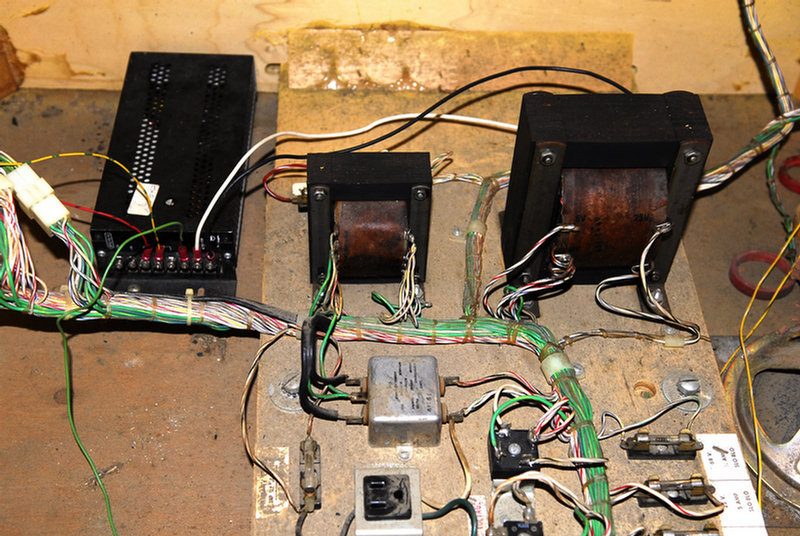
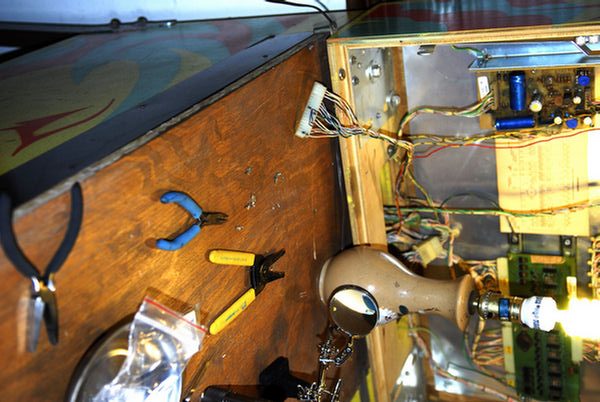
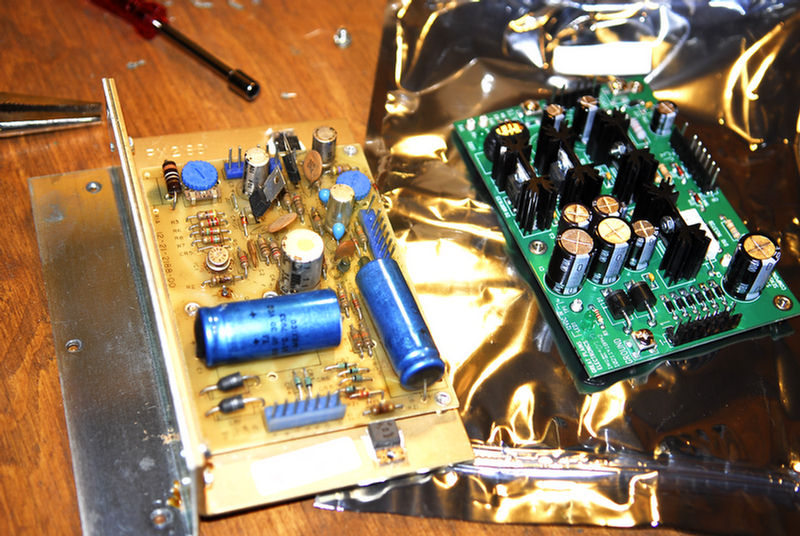
old and new boards 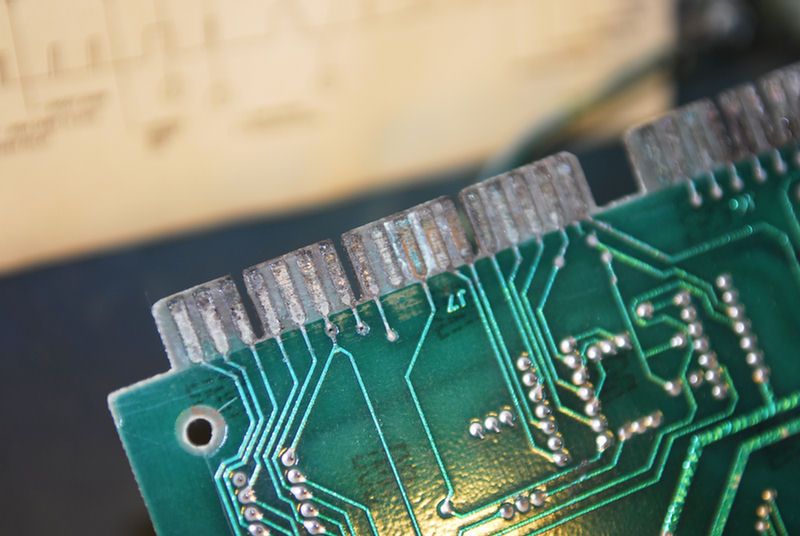
damaged edge connectors that had to be repaired 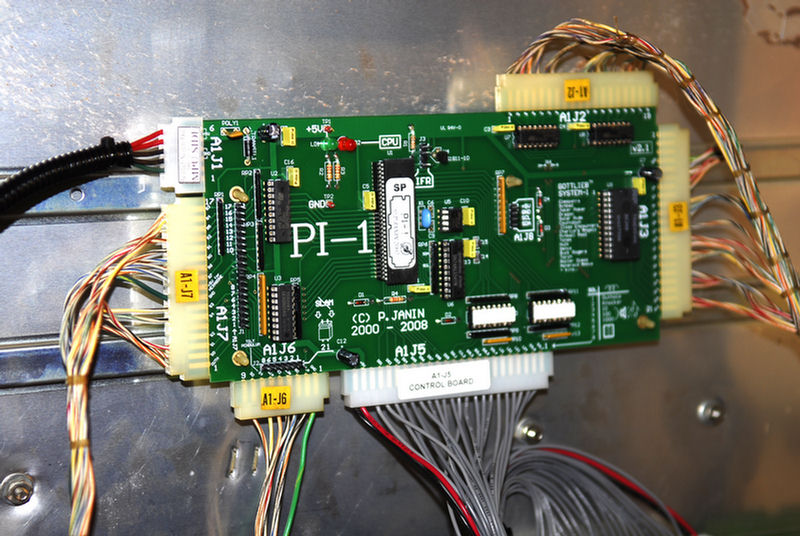
Pascal Janin replacement MPU 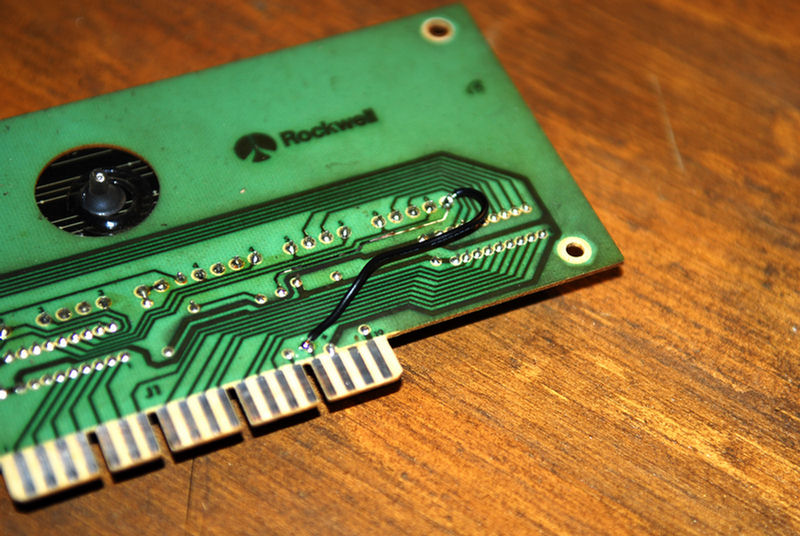

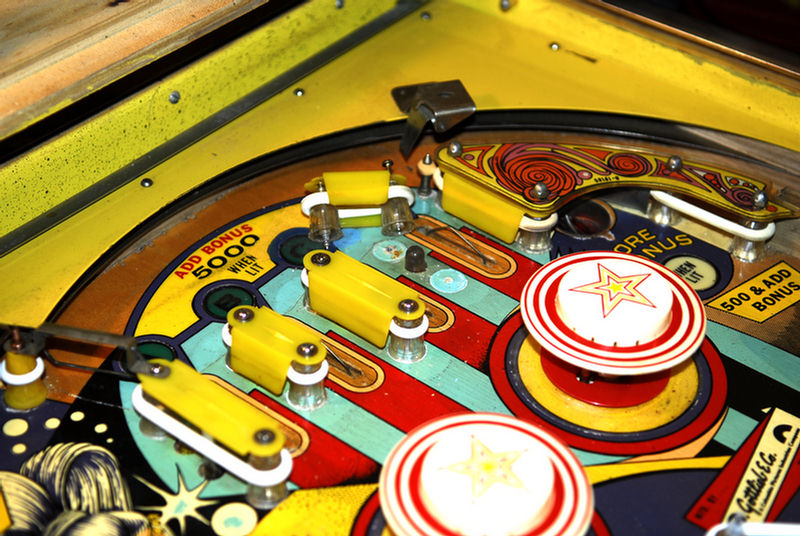
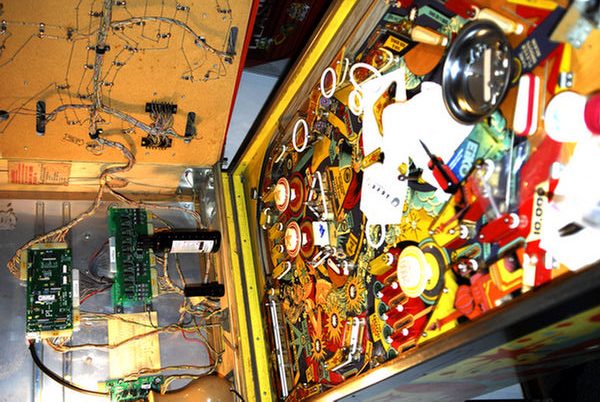
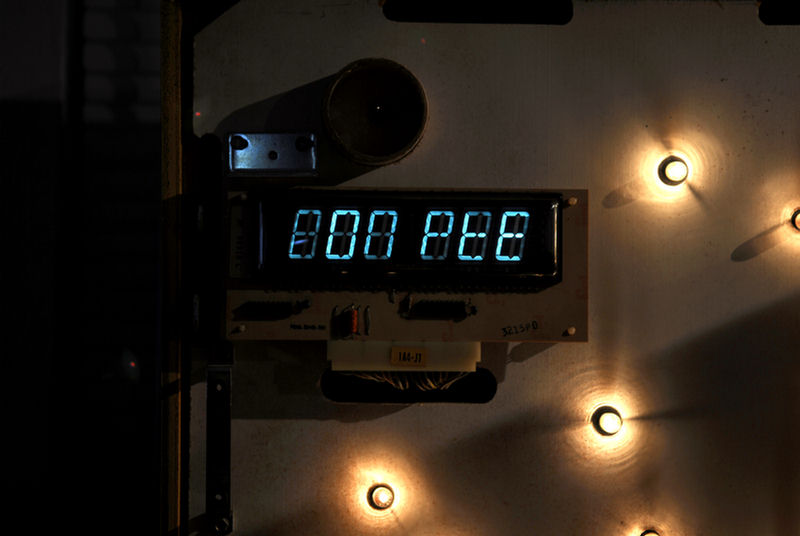
display problems 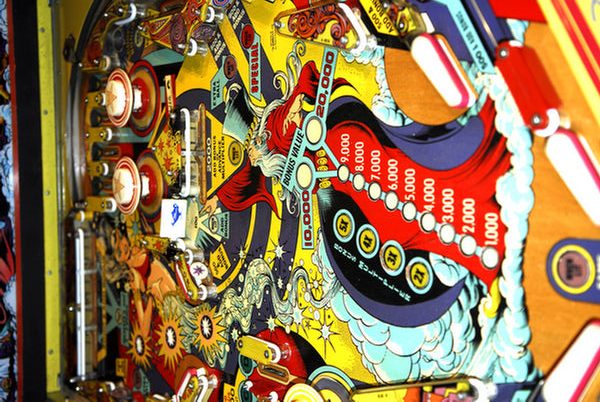
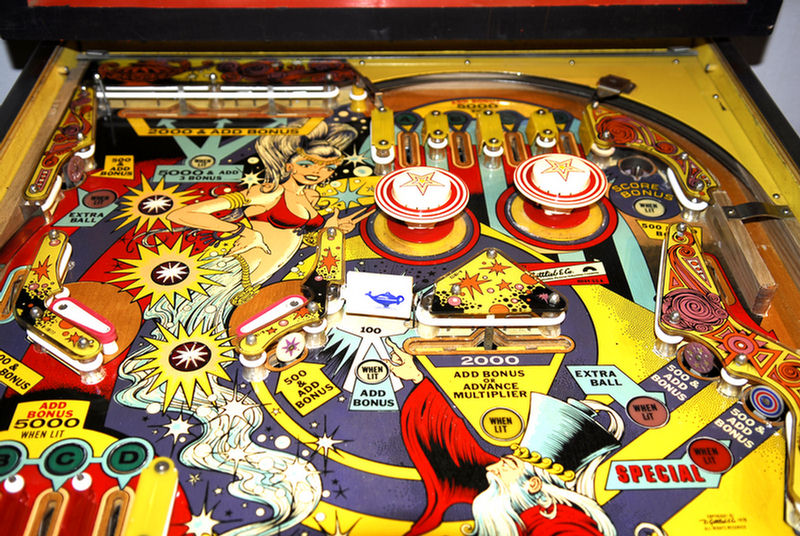
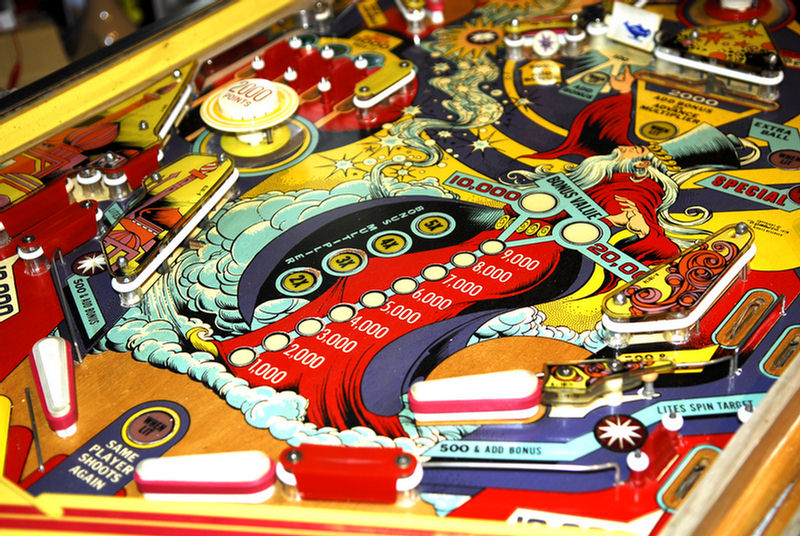
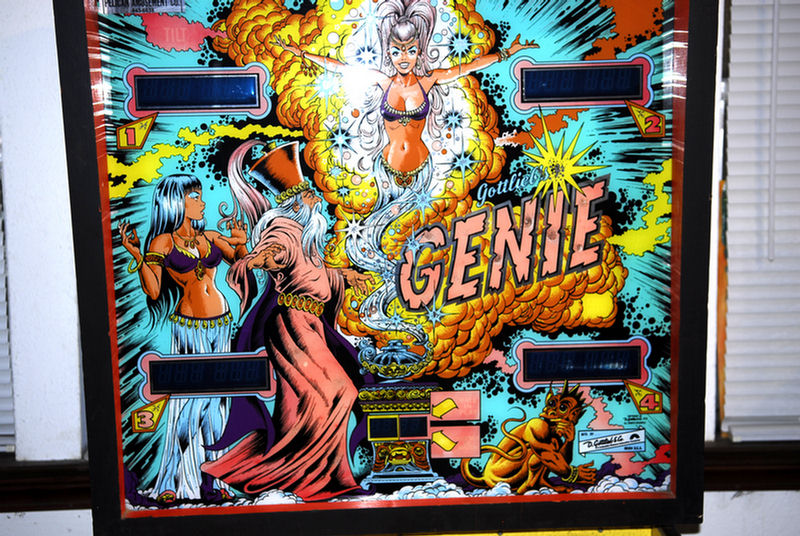
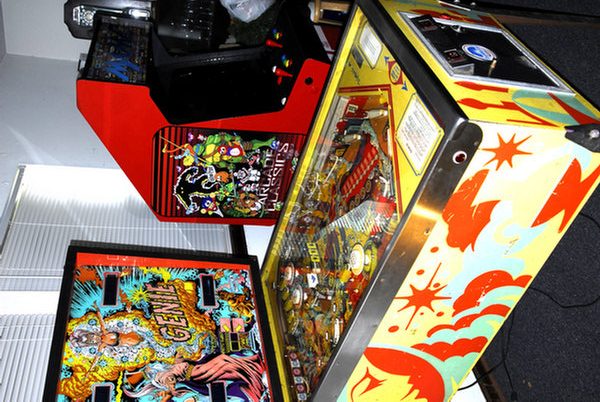
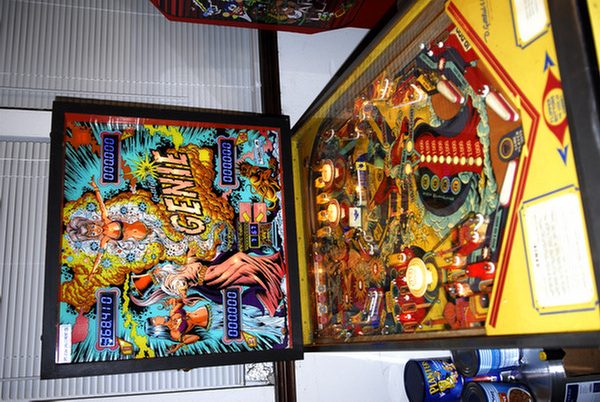
Texas Pinball Festival 2019 – Video Walk Thru

Just back from the 2019 Texas pinball festival. Found some time to walk through early Friday evening to give you all a quick glimpse of the show. Pardon the crappy camera work but I wanted to post something quickly and as usual, no editing, but it should give you a nice feeling of what it was like to be there and the large selection of games and booths. Very big turn out. Over 400 games with a lot of new ones. I share some of my hilights after the video here.
- Tons and tons of games from every age. There were pre-electricity games, as well as vintage woodrails, and lots of modern games.
- It looks like there were more than a dozen Munsters Premium/LEs ordered/sold for the show. It was actually hard to find the “pro” version at the show, but I managed to find one and play both games. In the end I favored the “pro” version over the premium. The main difference (play-wise) being the mini-lower playfield, which I found to be more like a child’s toy than legitimate pinball. The fact that it had little ramps and can do multi-ball really didn’t do much for me, and looking at the price differential, it just seemed crazy to spend so much more for what really amounts to some extra gimmicky gameplay. If you want the game, IMO, get the pro.
- Stern’s video animation on the latest game, Munsters is getting better and better. Framerate and animation quality is great. There’s all kinds of interesting indicators and stylized graphics that are very cool… although the details are so tiny on-screen for some of the minor displays (like little VU meters indicating jackpot and combo levels) that they’re not terribly useful. I wonder if most players will even notice? But still, looking good. Not so sure they’re as functional as I’d like them to be but Stern’s display tech is improving.
- I found American Pinball’s “Houdini” game to be very gorgeous, but not all that fun to play. The flow was clunky; the game was very much stop and go, and floaty. It looks like they took Theater of Magic and tried to add a bunch of extra shots to it, that are too tight to be regularly hit. I like the idea of the theme, but the way things were presented, it didn’t get to me the way I would have liked. Creative use of playfield inserts and colors.. This company has great aesthetic design sensibilities, and a good bit of their technology is definitely solid and on the right track, but Houdini IMO isn’t it. The game had constant opto problems and was not properly working a good bit of the time. Techs were always tending to it and when I played it, the balls were being recognized in the game when they’d drain, so I got stuck in an endless loop of the same ball when the ball search kicked a new ball into play. This gave me enough time to “get over” the game. Too much stop and go. However…. the other game from American Pinball….
- “Octoberfest” was a hit! It’s hard to believe such a fun, crazy playfield layout comes from such a newbie in the pinball manufacturing community, but I really enjoyed this game. It’s got a deep ruleset with a lot of fun things to hit, and the integration between the video screen and the gameplay works well. I do worry about these huuuuge ramps being un-hittable if the flippers become weak, but I had no trouble making most of the game’s shots, and it’s really rewarding unlocking the game’s main mulit-ball and watching a little roller-coaster of balls fly across the habitrails. If you get a chance to play Octoberfest, don’t miss it. Great game! But be prepared to shell out, as we say, “JJP/Stern LE money” for the American Pinball games. I think for this reason, money wise, there’s more bang for the buck, but if American Pinball could get their game prices down to the $5000-$5500 mark, they’d make a serious dent in the pinball market. The problem is, paying $7000+ for a pinball game means choosing between the two established leaders, one of which (JJP) really does give you a lot for that extra money. That’s a tough market to compete with. I’d like to see American Pinball put out a cheaper game of the same quality as Octoberfest.
- Special custom game “This is Spinal Tap” was featured at the show. I got a chance to chat with the owners/creators of the game and will be posting a video soon. Really interesting game design that is different from possibly anything else ever done – stay tuned for a post about that.
- John Papadiuk’s failed venture “Magic Girl Pinball” appeared at the show, as an object d’art more than an actual pinball machine. It was oogle-worthy in terms of the sheer amount of stacked luminescent plastic was screwed to the playfield. From the very beginning of this project, I took a lot of shit from people on Pinside for having the audacity to ask whether JPop had the resources to actually deliver what he was promising? I was called a bunch of names and basically run off the site for my insolence. It remains one of the reasons I don’t have much presence there today, so I’m appropriately snarky when it comes to the remnants of this project being glorified in any way. It remains IMO, what it is: Not a pinball machine, but a monument to greed and gullibility. And it served it’s purpose at TPF, where it spent it’s time being catered to by multiple techs just trying to get it to “light up”.. never mind the fact that it was unplayable. It was as it always was: a stage prop. It was interesting to see it. There were some creative bits that I found worth noting, including these washer-like LED bezels that allowed wide down-lighting from above (although this was more likely a necessity than it was a creative creation, due to how stacked the playfield was – the ability to see what was actually happening or where the ball was going, seemed more challenging than the game’s other goals.
- Spooky Pinball’s “Alice Cooper”-themed pinball machine was surprisingly fun to play! I have played some of their other titles and felt their games to have a bit of a hobbyist/amateur feel when it came to design, build quality and flow. But their latest offering I think is a very high quality game that looks as well as plays very nice. I’d say of all the new pinball machines I got a chance to sample at the show, this game was one of my favorites, second to Octoberfest.
- Another new manufacturer I hadn’t heard of showed up with a pre-production game featuring artwork by Dirty Donny, called, “Cosmic Carnival.” Like many other boutique games, they have the design nailed down, but I’m not so sure about the gameplay or overall game/playfield design. The artwork is killer. But the playfield looks very simple, but in fairness I should not judge a came that is not yet in playable stage. What I found notable about this game is that rather than use the industry-standard P-Roc technology, they’ve chosen to create their own proprietary eletronic technology. When I asked why theirs was better than what everybody else was using, the reply I got was, “Well, this is what our engineering guy wanted to do.” ooooh kay. We’ll have to see if this game actually does see the light of day? I think it may have one of those upper echelon price points too, which I think may be risky for unproven manufacturers.
- Speaking of unique engineering… a hidden gem at the show was Nick Baldridge’s “Multi-Bingo” emulation machine. After you stop asking yourself why would anybody want to emulate all 150+ American 25-hole, bingo-style games, and inquire about the actual process of doing so, it becomes a pretty amazing story. I wished I would have had a video camera running when I spoke with him about this game – i got a bunch of pictures but can’t really share with you the fascinating dialogue we had over how this game was built. Nick, basically wrote a set of Python classes, not to emulate bingo machine operation per se, but instead to emulate all the different types of relays and steppers that these machines have. He then re-created each bingo game by intimately analyzing the SCHEMATICS of each game and creating classes as modes tying all the code-based behavior of the individual relays. It’s a really amazing technical feat that most people can’t appreciate.
- … more soon!
